Master portrait artist Zimou Tan revives the Gospel in art but won’t depict the face of Jesus
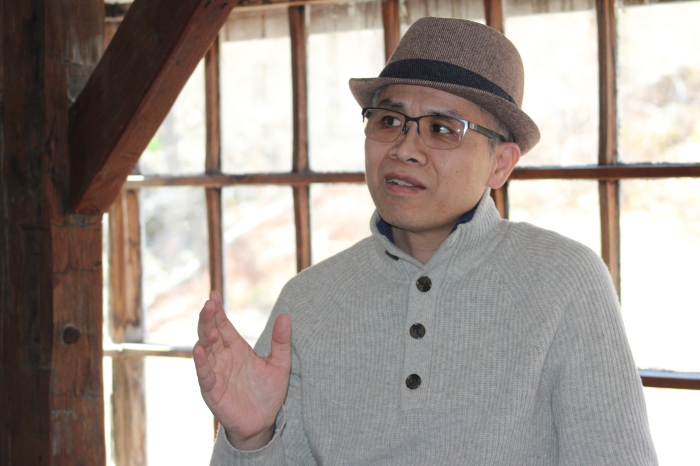
POUGHKEEPSIE, New York — About a month before his solo exhibition billed “The Lord was there” opened at the Arkell Museum in Canajoharie on March 1, master portrait artist Zimou Tan had a completely different vision of what the show would look like.
Initially, Tan planned to display 15 pieces from his portfolio split between his religious paintings and his portraits. But God, he said, interrupted everything.
“After a sermon that I heard about, maybe two months ago during our Sunday service, the pastor mentioned that the Lord was there. The whole sermon revolved around the idea that the Lord was there. Every part [of what] we do, Jesus is with us,” Tan explains.
“Tears came out my eyes, nonstop. My heart felt that I was called to do something different for the Lord. And I decided at that moment the whole show is dedicated [to the Lord].”
Tan, an award-winning traditional fine artist specializing in portrait and narrative figurative painting and drawings, would later find out that instead of getting space at the museum to display 15 paintings from his religious collection, he could only put 10 pieces on display.
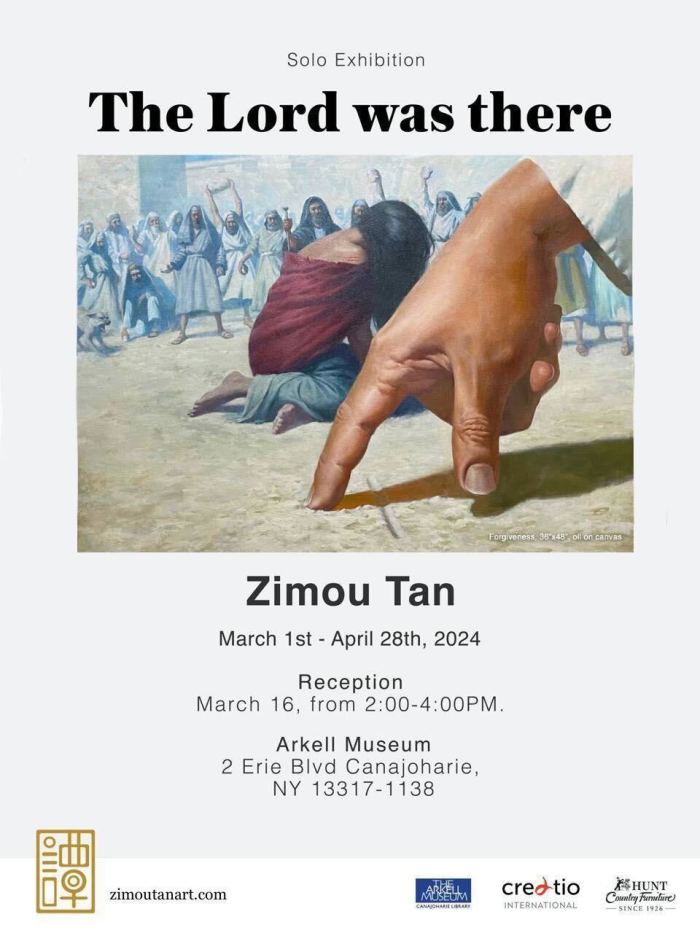
And the 10 he selected reflect how deeply his work is inspired by his faith and Scripture from the titles to the narratives behind them. There is “Valley of Dry Bones,” inspired by Ezekiel 37:1-10; “The Lion, the lamb, and the King,” inspired by Revelation 5:5 and Isaiah 53:7; “Forgiveness,” inspired by John 8:3-7; “Temptations,” inspired by Matthew 4:1-11; “Faith,” inspired by Genesis 22:1-19; “40 Days,” inspired by Matthew 4:1; “Blessing,” inspired by Luke 6:20-23; “Seeking Sanctuary,” inspired by Romans 11:33-36; "Carrying the cross together," inspired by Matthew 27:31-32; and “Receiving the Paraclete”, inspired by John 16:13.
About 10 years earlier, Tan, 50, says he converted to Christianity. Though he was always a spiritual person with Buddhist influences, his work was mainly rooted in a philosophical exploration of life without any specific faith tradition. Since his conversion to Christianity, he says he has been on a different journey with his art.
It is a crisp, sunny, spring day in late March when Tan recalls the story of God’s divine interruption that set the stage for “The Lord was there,” which ends on April 28 at the museum about 200 miles outside New York City.
He is comfortably dressed in jeans, a stylish sweater, a trilby hat, and glasses with photochromic lenses that change color in the sun. He introduces himself warmly in the parking lot of a historic building in Wingdale. He reveals that he and his wife are working to fulfill another vision to convert the building into a hub for artists. It will include a gallery where Christian artists especially can find a home to display their work.
“This gallery can also open a door, a window for Christian artists, because not too many places are willing to host just for religious art,” Tan says.
He recalls the history of the building as he enters. It once housed a hotel. Most recently, it was a showroom for Hunt’s Country Furniture. A sign for the furniture company still hangs at the front. It isn’t hard to imagine the building as a hotel near the bank of the Tenmile River across the street. It’s quiet and rustic.


Tan gives a quick tour of the building while casting his vision of each room inside. It’s easy to see as he describes it in painterly tones.
He eventually stops next to the sill of a bright picture window just above the main stairway on the second floor of the building where he shares a bit of his origin story as an artist. It started in China.
“I always joked around that I was made in China and improved in the United States,” he quips.
He recalls the first time he went to school at age 8. He remembers when his teacher asked what he wanted to be as an adult and how he never hesitated to tell it.
“People say, ‘I want to be an astronaut,’ ‘I want to be a doctor,’ ‘I want to be a lawyer,’ I didn't want to be a scientist,’” Tan recalls. “I was the only one with my hand raised, saying, 'I want to be an artist.' I remember that because that was the first time I went to school.”
Tan had never been able to attend school before then. He recalls being separated from his parents at one point and put in the care of his grandmother.
Though he never had everything he needed to practice art in his earlier years, Tan explains how a lack of formal tools for the trade wasn’t able to stop him from being creative.
“I was using a twig on the ground. During that time kids had nothing. I was just using rocks and twigs on the ground. Drawing and cutting, copying things I see,” he says.
People in his community noticed his talent. By the time he was about 12, Tan says he began learning about portraiture. He started sketching members of his family even though his work at that time was not very good. He also became an apprentice to a 93-year-old master artist in China.
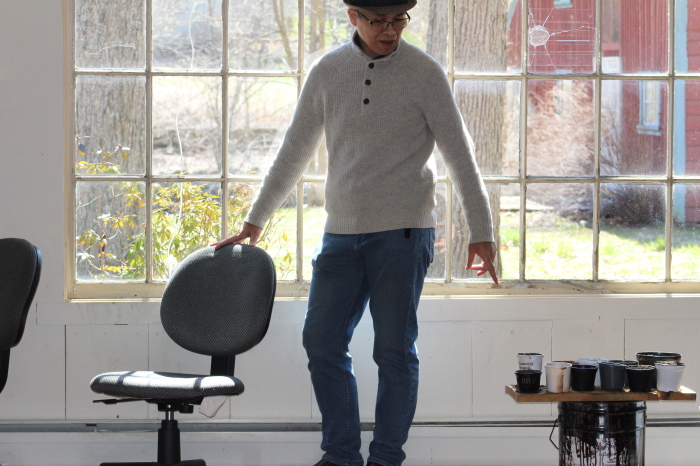
When Tan was 14, he immigrated to the United States with his family and quickly took advantage of all the access to formal art training.
He would eventually graduate from the Academy of Art College in San Francisco, California, in 2001, with degrees in both fine arts and traditional illustration. Following his graduation he spent 13 years as a professor of Fine Arts until he left teaching to focus on his portraiture commissions. He returned to teaching in 2015 as associate dean at Olivet School of Art and Design.
He explains how he was drawn to portraiture because of the various physical and spiritual elements involved in creating a portrait including the aura of a person’s soul.
“The hardest part for the portraiture, is capturing the people's soul. The likeness is the foundation of what we do but capturing the soul of the person is different,” Tan says.
“When you look at a painting, it looks like the aura is engaging with you, communicating with you, and has some time feeling [like] somebody's looking at you. Right? And when you look at a portraiture, that's more than just copying the subject.”
How does he see Jesus?

Religious art by famous artists such as Michelangelo’s “The Creation Of Adam,” Leonardo Da Vinci’s “The Last Supper,” Rembrandt’s “The Return of the Prodigal Son,” and Raphael’s “The Transfiguration” have held the world’s gaze in galleries for centuries.
In Tan's "Temptations," which depicts Jesus' deep spiritual journey as told in Matthew 4:1–11, he presents a culturally Westernized image of Jesus shrouded in a bit of mystery. The Christian Post recently highlighted viral videos on TikTok that claim Russian President Vladimir Putin opened up a vault revealing historic icons depicting Jesus, the Virgin Mary and his disciples as black.
Acknowledging the debate, Tan replied, “I don't want to put my own opinion into who Jesus really was” as a physical person.
He explains it’s one of the reasons he's never painted a portrait of Jesus.
“It's kind of ironic in the way that I painted Jesus because I never painted Jesus with a straight on portrait,” he says.
“A lot of times I either put Him under shade, under the shadow or thinking really small, the face is not clear enough. I'm a portrait specialist. Portrait is my specialty, but I do not have that courage. I don't think that I have that right to narrow down how Jesus looked like,” he adds.
Tan thinks God is too big for his canvas but suggests that perhaps Jesus looks different to people based on cultural context.
Reflecting faith
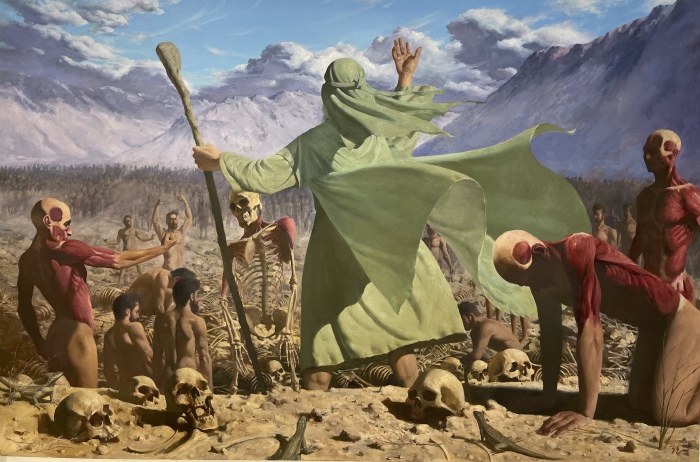
Though Tan’s previous work has attracted some acclaim in the art world over the years he doesn’t see himself as famous, nor does he seek to be. Since he converted to Christianity, Tan says he has been on a journey to reflect more of his faith in his work.
“I was [leaning] more towards Buddhism before. And then 10 years ago, I had an encounter with Christianity,” he says.
“At the beginning, I was searching for an answer. Why do people actually believe in Christ, in the Bible? I couldn't find the answer. Even one pastor he tried really hard to convince me that the Bible is actually legit … I couldn't connect at the time.”
It was about a week later at a Bible study a pastor at a church he visited told him about God’s love.
“That day, he [Pastor Mark Spisak from World Olivet Assembly] opened up a topic, ‘God is love.’ All of a sudden everything made sense to me because God you cannot touch, you cannot smell, you cannot see. God is invisible. Love too. You can only feel love, but you cannot touch love, right? And then, you cannot see love. But it's all in your heart. After that, that connection, everything made sense to me,” Tan recalls. “The whole Bible started to open up.”
The master artist who sees God as the ultimate artist, says he believes that everything he has experienced was designed by God to lead him to his current focus.
“The exhibition is all about concluding everything that I have done before and combining [it] with the Gospel. I believe that that's something that I was being called to do,” he says.
Not an easy road
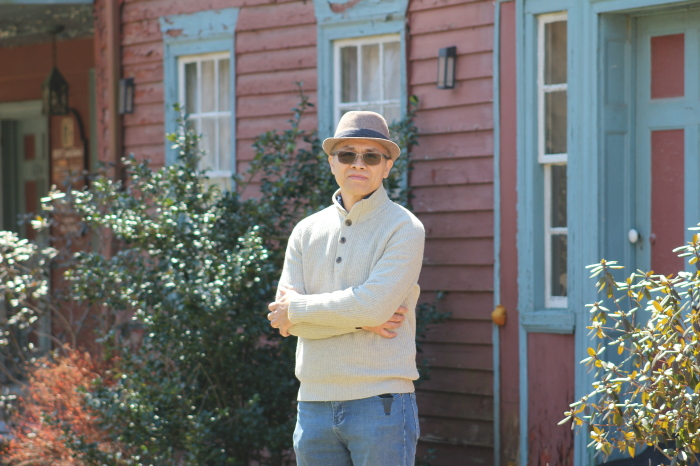
Tan admits that the life of an artist is never easy, and that in the early years after his Christian conversion he got a lot of backlash from fans when he began incorporating his faith in his art.
“The road is not easy. It's never been easy for an artist. First of all, you might have to worry about your bread on the table. Second of all, people may start criticizing you with everything that you do, just because sometimes they don't like the subject matter,” he says.
“When I first showed [my] work connected with the Christianity … some of my followers on Facebook, they say that what a shame that you waste all your talents and go into that direction and involved with religious art,” he recalls.
Tan, though, remains undaunted.
“I'm walking a narrow path just like the Bible said. … It's not easy. I respect all types of creations, even though following the Gospel won't be easy. I will continue to walk this narrow path to create more art to share with the public."
“God is the first creator, the first artist. He's the most amazing artist. He made the life form become alive. The whole earth, everything, he made everything. He designed everything,” he adds.
“I just need to use [the gift he gave me] as much as I can to spread the gospel to help other people. I think that is my commission. That's what I believe. This is a not an easy path, but that's my commission.”
Contact: [email protected] Follow Leonardo Blair on Twitter: @leoblair Follow Leonardo Blair on Facebook: LeoBlairChristianPost




























